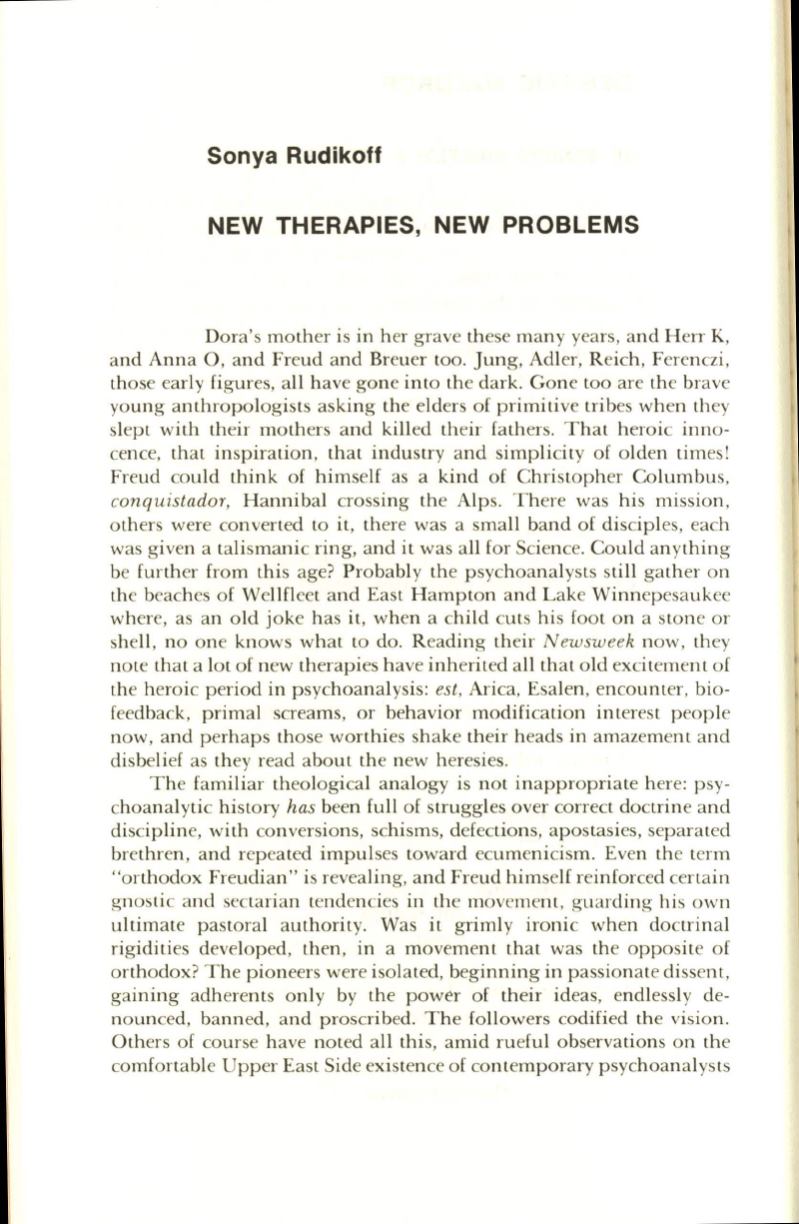
Sonya Rudikoff
NEW THERAPIES, NEW PROBLEMS
Dora's mother is in her grave these many years, and Herr K,
and Anna 0, and Freud and Breuer too. Jung, Adler, Reich, Ferenczi,
those early figures, all have gone into the dark. Gone too are the brave
young anthropologists asking the elders of primitive tribes when they
slept with their mothers and killed their fathers . That heroic inno–
cence, that inspiration, that industry and simplicity of olden times!
Freud could think of himself as a kind of Christopher Columbus,
conquistador,
Hannibal crossing the Alps. There was his mission,
others were converted to it, there was a small band of disciples, each
was given a talismanic ring, and it was all for Science. Could anything
be further from this age? Probably the psychoanalysts still gather on
the beaches of Wellfleet and East Hampton and Lake Winnepesaukee
where, as an old joke has it, when a child cuts his foot on a stone or
shell, no one knows what
to
do. Reading their
Newsweek
now, they
note that a lot of new therapies have inherited all that old excitement of
the heroic period in psychoanalysis:
est,
Arica, Esalen, encounter, bio–
feedback, primal screams, or behavior modification interest people
now, and perhaps those worthies shake their heads in amazement and
disbelief as they read about the new heresies.
The familiar theological analogy is not inappropriate here: psy–
choanalytic history
has
been full of struggles over correct doctrine and
discipline, with conversions, schisms, defections, apostasies, separated
brethren, and repeated impulses toward ecumenicism. Even the term
"orthodox Freudian" is revealing, and Freud himself reinforced certain
gnostic and sectarian tendencies in the movement, guarding his own
ultimat.e pastoral authority. Was it grimly ironic when doctrinal
rigidities developed, then, in a movement that was the opposite of
orthodox? The pioneers were isolated, beginning in passionate dissent,
gaining adherents only by the power of their ideas, endlessly de–
nounced, banned, and proscribed. The followers codified the vision.
Others of course have noted all this, amid rueful observations on the
comfortable Upper East Side existence of contemporary psychoanalysts


